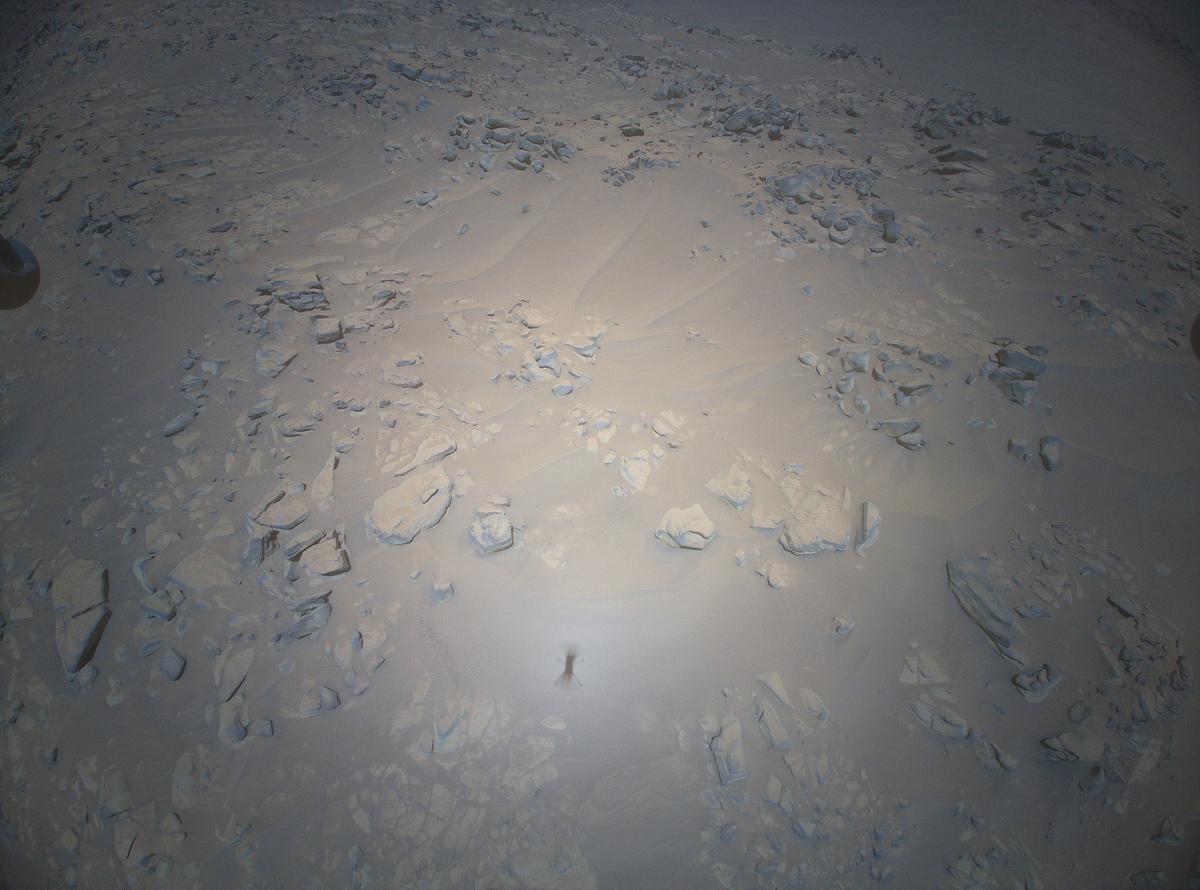When NASA decided to send the little Ingenuity rotorcraft to Mars on the belly of the Perseverance rover, they weren’t certain of success. Nothing like it had ever been attempted in Mars’ extremely thin atmosphere. Mission planners hoped and planned for a total of five flights, enough for a technology demonstration.
But now, as almost everyone knows, Ingenuity has wildly exceeded NASA’s initial expectations.
NASA’s Ingenuity has racked up important milestones since it detached itself from the Perseverance Rover’s underbelly in April 2021 and got to work. On April 19th, 2021, it became the first aircraft to complete a powered, controlled extraterrestrial flight. Since that day, it has blown away expectations and completed 70 flights.
Its most recent flight was its 70th, far exceeding its planned five flights. But the previous flight, number 69, was the helicopter’s longest. On December 21st, Ingenuity flew about 706 meters, or 2315 feet. That surpassed its previous longest flight, which was 704 meters, or 2,310 feet, in April 2022.
Five feet further might not seem like much. But Ingenuity is operating in a harsh environment that no aircraft has ever flown in before. Mars is extremely cold and dry, which can be good for aircraft on Earth. But it’s not on Earth; it’s flying in Mars’ very thin atmosphere, only about 1% the density of Earth’s. The thin atmosphere makes lift more difficult to generate, though the gravity is weaker, which helps. Not to mention the time delay in communications between Mars and Earth that adds a layer of complexity to every endeavour.
In that context, a 706-meter-long flight is a serious achievement.

In total, the 1.8 kg (4 lb) 10 cm (19 inch) tall rotorcraft has flown just under 17 km (10.5 miles) over the Martian surface. It’s spent 127.7 minutes in flight and has climbed as high as about 24 meters (79 ft.) Its 69th and longest flight lasted 135 seconds at speeds as high as 35 km (22 mi) per hour.
These numbers signify a rousing success. Ingenuity has proven the value of having an airborne companion for Mars rovers. An eye in the sky can help plan a rover’s path and can identify intriguing features in need of exploration. Ingenuity is no longer a technology demonstration. Now, NASA is using it as a scout for Perseverance, and the goal is to keep the rotorcraft ahead of the rover. But the successful scouting has led to communication disruptions.
NASA lost contact with Ingenuity back in April 2023 during its 52nd flight. The flight was successful, but NASA lost contact with the tiny rotorcraft as it descended back to the surface to land. The dropout in communications was expected due to an interfering hill between Ingenuity and Perseverance, which handles all of the craft’s communications. Perseverance was busy working on one side of the hill while Ingenuity sat on the other side. After 63 days, the rover crested the hill and could see Ingenuity again, and communications were restored, just as planned.

Ingenuity was never meant to be a working scout, so it’s well outside of its planned mission parameters now. In future missions, these communication dropouts will be avoided as much as possible.
Ingenuity suffered another setback, too, on May 3rd, 2022. Seasonal dust blocked the rotorcraft’s solar arrays, and Ingenuity was unable to fully recharge its batteries. One of the machine’s instruments went into a low-power state and reset its clocks. “When the sun rose the next morning and the solar array began to charge the batteries, the helicopter’s clock was no longer in sync with the clock aboard the rover,” NASA wrote in a statement. “Essentially, when Ingenuity thought it was time to contact Perseverance, the rover’s base station wasn’t listening.”
That communications drop-out didn’t last long, though. NASA personnel instructed Perseverance to continually listen for Ingenuity’s signal until communications were re-established a couple of days later on May 5th.
These hiccups are expected in a technology demonstration mission. By lasting this long and flying so much, and by dealing with communication problems and dust problems, NASA’s learning a lot more than they hoped for. Failures and problems are all a part of it.
And Ingenuity isn’t done yet. It’s survived everything Mars has thrown at it for almost two years. Each successful flight is a huge bonus now.
As the first aircraft on Mars, Ingenuity is a technological trailblazer. Its successors will be based on the many lessons NASA has learned from the little rotorcraft. And if rover design is any template, the aircraft that follow in Ingenuity’s footsteps will be larger, more robust, and more capable.
Mars exploration will never be the same again.
There are plans to send a pair of rotorcraft to Mars in the Mars Sample Return mission. And engineers are already thinking about a Mars Science Helicopter to accompany a future rover mission. It would be much larger and more capable than Ingenuity. It’ll have six rotors and be able to carry several kilograms of scientific payload to study areas inaccessible to rovers.

Ingenuity’s success, including its 69th and longest flight, is directly responsible for the future success of other rotorcraft on Mars. And each successive flight creates more data that’ll be used to improve future rotorcraft.
Not only on Mars but elsewhere in the Solar System.



With two rotorcraft the problem of losing communication because of a hill blocking the signal will be solved, if one stays at a point in-between.
Will individual rotorcraft someday be able by using AI, to operate alone when need be and then transmit any data gathered to a passing satellite?
AI may be used in a limited way if it is pretrained and hence well tested and low energy use. Today’s top AIs takes loads of energy, training data and time to develop. But a trained small size neural net may offer large capability at low power.